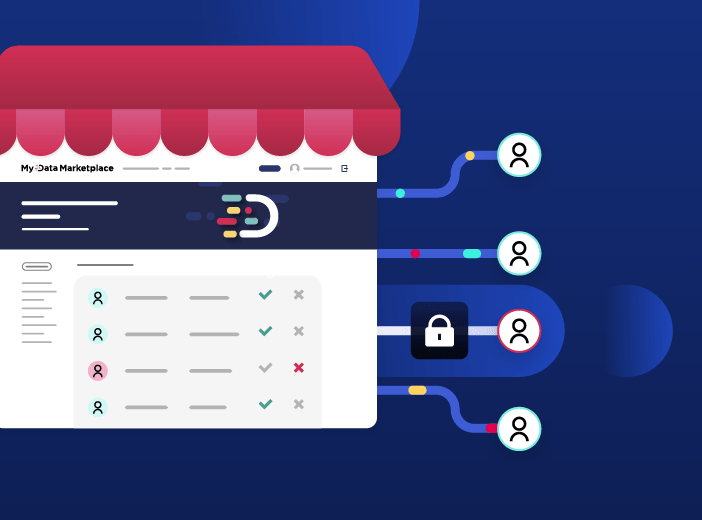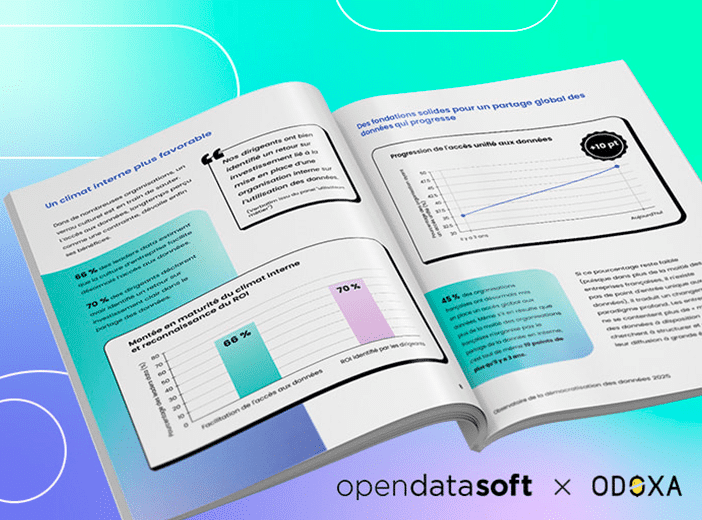How no-code solutions aid data democratization

Gaining true value from data means making it easy for anyone to create compelling data experiences. No-code solutions are central to this data democratization, allowing everyone to build data visualizations, apps and stories without requiring specialist skills. Our blog explains how the world is accelerating towards a no-code, data-driven future.
Gaining true value from data means making it easy for anyone to create compelling data experiences. No-code solutions are central to this data democratization, allowing everyone to build data visualizations, apps and stories without requiring specialist skills. Our blog explains how the world is accelerating towards a no-code, data-driven future.
We live in an increasingly digital world, both in terms of the technology we use and the data we consume in our working and private lives. That makes it essential for everyone to be able to both access and use data and technology without needing to be an expert with in-depth programming skills.
On the digital side, this need to make it easy for anyone to create programs without having to be a developer has led to the rise of low-code and no-code solutions. The same techniques can be applied when it comes to data – enabling employees and citizens to build compelling data experiences and launch new data services without having to learn in-depth programming or analytics skills.
What are no-code and low-code solutions?
No-code and low-code solutions allow anyone to create programs, from web-based enterprise solutions to mobile apps, by using drag and drop graphical interfaces and pull-down menus, without needing to write a single line of code. As the names suggest, low-code applications require some basic coding that can be learnt quite quickly, while no-code apps don’t need any coding at all.
Gartner estimates that the global market for low-code and no-code solutions hit $13.8 billion in 2021, an increase of 22.6% from the year before. This massive growth is down to four key factors:
- Businesses are looking to digitize their processes to become more agile and efficient. However, there is a global shortage of trained developers, making it difficult for companies to employ enough programmers to digitize everything quickly enough.
- By empowering employees with no-code solutions, they can build tailored applications that make their jobs easier and more efficient. After all, they are best placed to understand what goes into their daily working lives and how digitization can help improve their experience. That means the applications they create are more likely to be adopted and to deliver real ROI.
- No-code applications are faster and cheaper to produce as they are typically smaller and don’t require heavy involvement of the IT team or software developers. This helps with creating more agile, digital-led organizations that can meet the challenges of a fast-moving world.
- There are a growing range of low-code and no-code platforms now available, and an increasing number of vendors have incorporated specific features into their solutions to meet the needs of citizen developers.
No-code solutions and data democratization
Data democratization aims to make it easy for anyone to access and use data to build compelling data experiences. This could be for their own use (such as a monitoring dashboard around specific information), for sharing internally (for example a visualization of a dataset that can be used by others in the organization or wider ecosystem) or externally, such as a map or data story that is made available to citizens in the case of local government.
As can be seen, data democratization and no-code solutions both support the same key objective – empowering everyone with the data and technology they need in their daily lives, without requiring specialist skills.
However, currently the data stack is the domain of experts. Connecting to data sources (even common ones such as Google Drive or SharePoint) requires IT support. At the sharing and visualization layer, while the majority of existing business intelligence solutions are extremely powerful, accessing the right functions requires comprehensive training. The result is that they can only be operated by trained data analysts – if an internal user wants a data visualization or dashboard for example they have to brief the analyst and wait for the results. This clearly adds time to the process and introduces the risk that the results won’t quite match the brief.
For data democratization to deliver effectively the tools that support it have to be intuitive, easy to use and no-code based. Only then will true democratization be possible, inside and outside the organization.
No-code in action - the ODS Studio
To help underpin data democratization Opendatasoft is committed to making its platform as simple to use as possible, enabling as many users as possible to get value from data. As it is SaaS-based it can be accessed by anyone with a web browser and it has automated connectors to easily integrate data from across the organization and beyond.
A key part of this approach is the ODS Studio. This tool is designed to enable any user to create charts and indicators quickly and intuitively, then organize them simply on a web page without needing to write code, and finally easily share them with colleagues, customers, citizens, and other stakeholders.
This means users don’t have to learn how to use complex business intelligence platforms or to know how to program in HTML or CSS to create web pages. The result is that anyone can very quickly create interactive, compelling visualizations without any training due to four key features:
Drag and drop interface
Users can organize the different sections of a page and the graphics, indicators, and text areas within it by dragging and dropping them wherever they want them to go.
Easy navigation through intuitive experience
The whole process of creating a data story or report is clear and simple. The tool guides the user step-by-step through the workflow, from selecting the source dataset to choosing a visualization, configuring the graphs/KPIs, and customizing their appearance.
Single screen for simplicity
Users never need to leave ODS Studio when creating visualizations. The data catalog is accessible directly from the tool, along with all options needed for sharing with other users inside and outside the organization.
Built-in calculations to ensure accuracy
Users don’t need to know complex formulas or perform calculations themselves in order to compare two results or establish an average. Instead, they simply choose the type of operation they need to perform in their graphs and pick indicators from a list of suggestions.
Instant preview
Users can see the result of every action in real-time, saving effort and allowing people to easily preview how the page will look when integrated into a data portal or data service.
ODS Studio works alongside other features of the platform that are aimed at expert users, such as our powerful API infrastructure, giving everyone the tools and functionality they need to turn data into value.
You can read more about ODS Studio in our comprehensive blog – and hear from its product manager in this interview : how we’re simplifying the data visualization experience with ODS Studio.
A no-code future for data experiences
We’re at an exciting time for the future of data sharing and digitization. The combination of no-code tools such as ODS Studio, organizations embracing data-driven cultures, and a greater recognition of the value data brings is enabling true data democratization inside and outside organizations.
Welcome to the no-code data future!

It can be hard to understand exactly what a data product is, given the many ways that the term is defined and applied. To provide clarity this article provides a business-focused definition of a data product, centered on how it makes data accessible and usable by the wider organization, while creating long-term business value.


